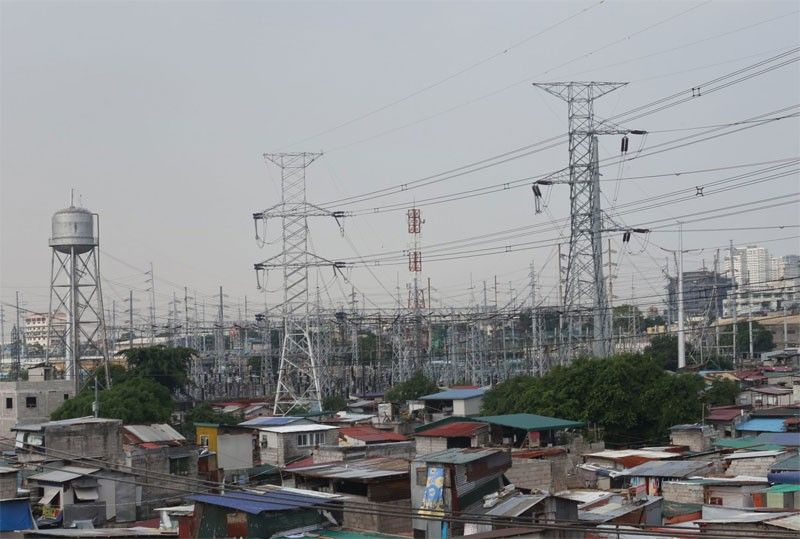More outages possible – DOE

MANILA, Philippines — The Department of Energy (DOE) is not ruling out more “red alerts” in the coming days after last Monday’s power disruption in many parts of Luzon triggered by forced outages of five power plants.
The DOE, however, also said an overall improvement in power outlook is expected with the resumption of operations of San Miguel’s natural gas plant in Batangas later this month.
At a briefing, Energy Undersecretary Rowena Guevara said yellow alerts over the Luzon grid are expected for the entire month of May, but these might not materialize if the Ilijan power plant resumes operations.
“Once Ilijan operates, this (outlook) will change. If that power plant comes in, the yellow alerts will be reduced,” Guevara said.
“We expect it to come in on May 26, but we do not expect all 1,200 MW (megawatts) by May 26. They will gradually increase it unit by unit,” she said.
The DOE is forecasting a total of 15 weeks under yellow alert status for the Luzon grid in 2023, and none under red alert status.
Guevara said weeks under yellow alerts could turn into red alerts if major power plants conk out as what happened on Monday.
A yellow alert is issued when the operating margin is insufficient to meet the transmission grid’s regulating and contingency requirement. A yellow alert does not necessarily mean power outages.
A red alert, on the other hand, is issued when power supply is insufficient to meet consumer demand and the transmission grid’s regulating requirement, which can lead to rotating power interruptions.
Power interruptions were experienced in many areas on Monday as the Luzon grid was placed under red alert status from 1 p.m. to 4 p.m. and 6 p.m. to 8 p.m. and under yellow alert from 4 p.m. to 6 p.m.
The National Grid Corp. of the Philippines (NGCP) put the Luzon grid under red alert following the tripping of the Bolo-Masinloc 230-kilovolt line 2, which led to the tripping of the Masinloc Units 1 and 2 with a capacity of 618 MW.
“The initial explanation they had was there was heavy rains and lightning in that area. Their transmission line was hit,” Guevara said, noting that the agency is still waiting for the final report from the NGCP.
Probe
In a statement yesterday, NGCP said initial investigation on the sequence of events that led to the red alert in Luzon grid on Monday showed that the Bolo-Masinloc 230-kV Line 2 tripped.
“This line is N-1, or operates with a redundancy. The load carried by Line 2 was automatically transferred to Line 1 when the former tripped. Each of Lines 1 or 2 is more than capable to singularly carry the entire loading of the Bolo-Masinloc 230kV facility at any time,” the power transmission operator said.
Thereafter, it said two of three units of the Masinloc power plant tripped.
NGCP said its Bolo-Masinloc Line 2 was restored within 19 minutes.
However, together with other units already on forced outage, NGCP said total power lost to the grid was 1,354 MW.
“Given the N-1 contingency in place at NGCP’s Bolo-Masinloc Line and the automatic transfer of loads from Line 2 to Line 1, the tripping of two Masinloc units was both unexpected and undesirable,” NGCP said.
“NGCP emphasizes that protection settings of customers connected to its system must remain consistent with NGCP’s protection settings and other grid parameters,” it added.
NGCP said it is coordinating with Masinloc power plant and other grid-connected generating plants to ensure that protection settings are in sync between generating plants and the company.
Energy Secretary Raphael Lotilla, meanwhile, said the recent prolonged power outages in Panay and Negros, as well as the power interruption experienced on Monday, have been due to inadequacies in the transmission system.
“We call on everyone’s cooperation in the completion of these projects and the identification of other critical transmission projects that need upgrading or rehabilitation,” Lotilla said.
“The support of the local governments and landowners in facilitating the construction of towers and distribution lines is equally essential,” he added.
Lotilla said two performance audits are set to be conducted on NGCP.
He said an initial audit on the financial side of NGCP’s operations had already been completed by the Energy Regulatory Commission (ERC), which would be taken into account on the ongoing rate rebasing review.
“This is the first audit that has been conducted, primarily on the financial side with observations as well on the technical side,” Lotilla said.
“We will follow that through with a regulatory performance audit which is conducted by the ERC and by a contract performance review which is to be conducted by PSALM (Power Sector Assets and Liabilities Management Corp.) and Transco (National Transmission Corp.) as the counterparties to the NGCP in the concession agreement,” he said.
NGCP holds a 25-year concession and a 50-year congressional franchise to expand and operate the country’s power transmission grid.
“It is not a case of blame throwing. What we want to do is establish in an objective manner what are the weak links, what are the problems in the transmission system and what can we do in order to address these problems,” Lotilla said.
Meanwhile, momentary power interruptions were again experienced by some customers within the Manila Electric Co. (Meralco) franchise area yesterday due to another transmission line tripping.
Meralco said an automatic load dropping occurred at 3:40 p.m. yesterday due to the tripping of the Duhat-Hermosa 230-kV line.
Meralco said this affected more than 200,000 customers in portions of Paco and Sta. Mesa in Manila, Caloocan, Malabon, Batangas, Antipolo in Rizal, San Pedro and Biñan in Laguna and San Rafael and Pulilan in Bulacan.
It said power supply in all affected areas was restored by 3:57 p.m. – Artemio Dumlao
- Latest
- Trending






























